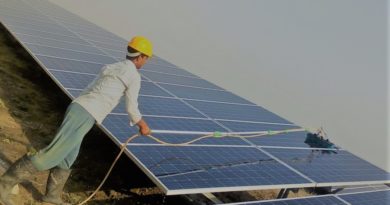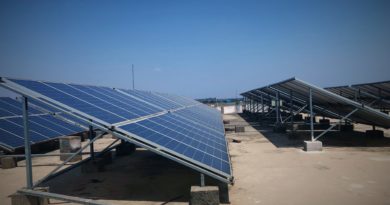Transformer Maintenance in Solar PV Power Plants
On utility-scale Solar Energy facilities, voltages are transformed after the inverter for delivery to the utility grid. A transformer on a solar power facility is primarily used to step-up the voltage to deliver the renewable energy (RE) to the utility grid. This is one of the key components of the utility-scale solar power systems and so is the need for transformer maintenance while doing the O&M of Solar Power Plants.
As the solar power plants sometimes or most of the times need to withstand adverse weather conditions and so are the transformers exposed to adverse conditions. This is the key reason why the transformer maintenance is crucial to undertake for proper functioning of the plants. Any breakdown affects heavily on the economics of the plant and can cause danger to safety of the people working nearby.
Considering this important reality, we try to cover the most common faults in the transformer and how to avoid them.
It has been observed that 50% of transformer failures are caused by insulation, dielectric and oil related faults.
The Dielectric Strength of transformer oil is very important to maintain since it is essential in maintaining the reliable operation of power transformers. The dielectric strength of transformer oil is mainly determined by the presence of acids, water, and other contaminates.
Acidity, moisture content, as well as general impurity content are some of the properties that increase with age of the oil, while viscosity, flash point, specific resistance, transformer insulation, interfacial tension decreases with age. The respective increase or decrease are detrimental to the transformer functioning.
It is, therefore, important to keep the transformer oil as free from such contaminates as possible. The dielectric strength of the oil will decrease with time and based on the service conditions where the transformer is located.
The Dielectric strength of transformer oil is also known as the breakdown voltage of the transformer oil. “Breakdown Voltage” (BDV); The breakdown voltage of an insulator refers to the minimum voltage which results in part of an insulator to become an electric conductor.
Considering its chemical properties, the mineral oil is used as a dielectric in high power transformers.
The mineral oil, with the main roles of insulating and cooling in power transformers, is similar to the blood in human body. The benefit of examining how quickly the oil is aging is that it permits the oil to be used as long as possible. If this is done properly, a replacement or purification can be done before it can cause damage to the container or other materials inside the transformer, or to the environment. The transformer mineral oil is one of the most expensive extracts produced by its refinement of crude oil.
Clean oil with a low moisture content gives higher BDV results than oil with high moisture content and other conducting impurities. A rating of 30 kV is the minimum breakdown voltage at which transformer oil can be safely used in a power transformer.
“Breakdown Voltage” (BDV) is measured by observing the voltage that is required to jump a spark between two electrodes immersed in the oil separated by a specific gap or distance.
Dielectric strength of oils is also determined by the dielectric loss tangent or “Tan Delta.”
The operation of the transformer produces heat. Transformer oils perform at least four basic functions in an oil‐immersed transformer. Oil provides insulation, cooling (heat distribution), and helps extinguish arcs (voltaic discharge). Oil also dissolves gases generated by oil degradation, deterioration, and gases and moisture from whatever atmosphere the oil is exposed to.
Therefore, monitoring and maintaining oil quality is essential in ensuring the reliable operation of oil‐filled electrical equipment. Even in ideal conditions, oil ages and degrades over time, as its useful service life is finite.
Hence, it is recommended to test the oil BDV value once in a year and take the corrective measures accordingly.
References:




Operation and Maintenance cost for solar plants are low as there are no variable costs such as fuel. Major cost of O&M is for cleaning of solar panels.